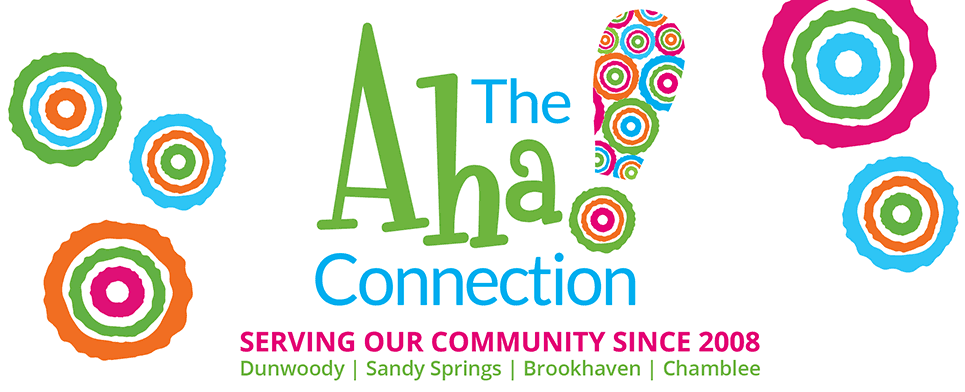Click here for original article from the AJC
Erika Harris is co-chair of GLASS (Georgians for Local Area School Systems). In this column, she endorses House Resolution 486, which allows newly formed cities in Georgia to also create their own school systems.
This issue has great relevance in DeKalb County where newly formed municipalities and neighborhoods considering independence from county government are also weighing breaking from DeKalb Schools. (Here is a feasibility report on City of Dunwoody schools.)
But they cannot do so without a change to the state constitution, which is what HR 486 would do. The resolution states: Proposing an amendment to the Constitution so as to authorize any municipality created on or after January 1, 2005, and any municipality which is contiguous to a municipality created on or after January 1, 2005, irrespective of whether such municipalities may be in different counties, to establish individually or collectively by local law an independent school system; to provide for related matters; to provide for the submission of this amendment for ratification or rejection; and for other purposes.
By Erika Harris, Co-Chair of GLASS (Georgians for Local Area School Systems)
As young as the United States of America is, our public education history is even more juvenile. And as such, we are learning the ropes and constantly working to improve and meet our responsibility of educating, in an equal and effective way, each of our youngest citizens. Through our brief history of public education, we see that it is full of twists and turns, old and current – all to respond to the changing needs of our student populations and learning expectations.
Some of these decisions have been forward thinking, and some reactive measures to extreme educational crises.
In 1945, the Georgia Legislature and constituents of Georgia responded to a statewide crisis in education. Severe inequalities existed in; school facilities, curriculum, teacher quality, teacher pay, etc. The funding for schools was haphazard and at a certain point, schools were only able to stay open for three and a half months during a year – costing schools and districts accreditation and sending Georgia spiraling into educational failure.
Realizing that there was no continuity in the control mechanisms of school houses or districts, and that because of an extreme number of single school systems and tiny schools districts being fiscally and instructionally unstable, Georgia made an effort to consolidate schools into county districts to: equalize educational opportunities through increased county oversight and to increase the efficiency of funding through the same county control mechanisms.
A constitutional amendment was passed in 1945 in Georgia that created a cap on the number of school districts in Georgia and prohibited the creation of any municipal controlled school district from that point forward. The only door left open as it pertained to school district “creation” was through the consolidation of existing school systems.
The response to the educational crisis by the legislature and electorate in 1945 provided important and direct benefits immediately tangible at that point in time. However, what was a benefit then, has become a liability today through its inflexibility as it relates to the need for deconsolidation of super-sized districts.
It is no surprise that the constitutional amendment took on the significant problem of limiting school district creation and allowing for consolidation, when you consider that in Georgia and nationwide, the average school district falls well under the student population of a super district.
Very small school districts are a majority compared to super-sized ones. In fact, the average school district size nationwide is 3,500 students. Less than 30 school districts in the United States house more than 95,000 students, and only 75 school districts nationwide house more than 50,000 students.
On a surface level, it appears that consolidation of school districts merits more attention seeing that there are so few super-sized districts. Appearances can be deceiving though.
In Georgia, when the student populations of the largest four school districts are added together (Gwinnett (160,000 students), Cobb (107,000 students), DeKalb (98,000 students), and Fulton (92,000)) we find that 28 percent of Georgia’s students attend school within one of four county school systems – out of 180 Georgia state school districts.
More than one out of every four students in Georgia attends school in one of four school districts. The other three attend school in one of 176 school districts.
The numbers above show that there is a greater risk to student success in large districts rather than smaller ones. When one of these four super districts in Georgia experiences a “bump in the road,” or worse, a system wide failure – the risk to the student body by numbers alone is exponentially larger than that of a small school district.
For example, had DeKalb (one of 180 districts in Georgia) lost its accreditation, approximately one out of 14 high school graduates in Georgia would have been negatively impacted for college admissions. The gravity of that situation affects not only the future of those graduates – but it has a large scale and direct impact on the economic viability for the state of Georgia too – which impacts everything – including the funding of our schools.
Risk isn’t the only calling for reform, though; modernization is, too.
Education in 2013 looks very different than 68 years ago. We have become more attuned to individualizing the educational experience of our students to ensure that they meet their highest potential, we have a greater offering of in-school programs, and a wide variety of curricula and instructional methods available to us. Our teachers are among the most highly educated of our constituents, often holding master degrees and beyond.
And we spend more per pupil today, adjusted for inflation, than we ever have. Our schoolhouses have often become second homes for our student populations, offering after school enrichment and intervention programs, having students spend more waking hours in school than at home.
Gone are the days of one-size fit all, top-down education policy making. Education has become too complex, too large, and the needs of our students too diverse and important to treat education that way.
Today, our educational systems need to be able to flex with the fast-changing needs of our student populations, to allow school-houses to identify the requirements of their learning community and implement a learning experience that will bring out the very best in each student. This experience includes (but is not limited to); school day and calendar organization, curriculum and instruction programs, data collection (AKA standardized testing), after-school programs, parent-education programs, teacher training, the hiring of faculty to ensure proper vision-matching, financial management of resources and allocation of these resources.
And when a school district shows an inability to do the above, it begs the question of, “Is that district sized and organized properly to be able to service its student body in an effective and far reaching manner?”
The Georgia constitution allows for the consolidation of small school systems to maximize financial efficiency and learning opportunities. It allows for status quo, for systems that are sized right. It does not provide for the opportunity to deconsolidate school systems where their super-size is now hindering their ability to provide a quality and equitable education to each of their students.
Today we have an opportunity to provide this needed constitutional balance though: House Resolution 486: the independent school system constitutional amendment.
The goal of HR 486 is to reintroduce flexibility into the Georgia constitution and allow for the “right sizing” of school systems in municipalities formed after 2005 (and any other municipalities that share a contiguous border.)
HR 486 gives a voice to these localities and allows them the choice to seek independent control over their schools and “right size their system” – which provides an opportunity to create a customized school system that will be highly responsive to their learning community’s needs, to focus their funding in specific and effective manners, to bring decision making close to home – thereby helping to ensure the ultimate goal in education: a high quality learning experience where each student can reach their highest potential.













